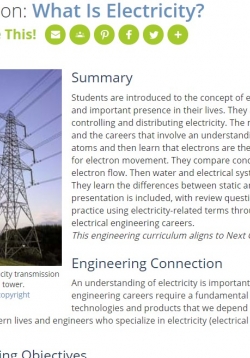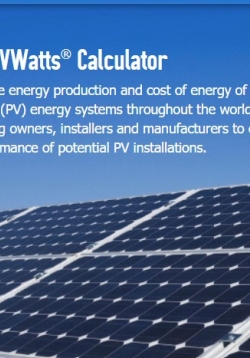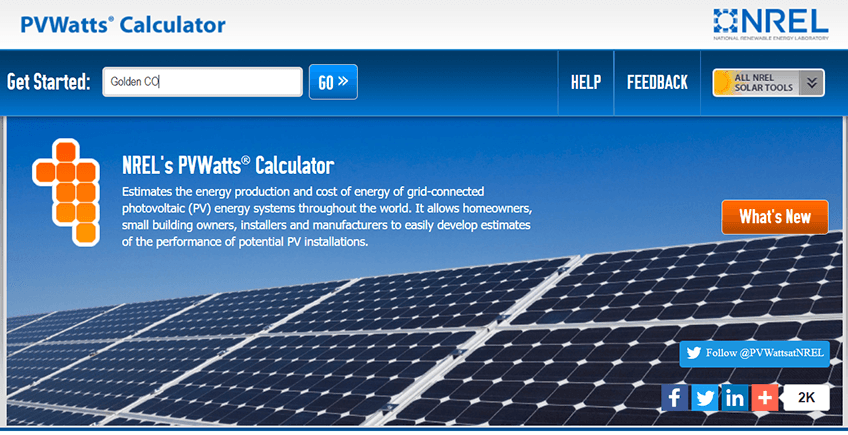
A basic introduction to electrical energy and how it shows up in the world, including understanding the atomic basis for electricity. Not phenomena driven, but a solid stand-alone lesson to help students understand electricity.

A basic introduction to electrical energy and how it shows up in the world, including understanding the atomic basis for electricity. Not phenomena driven, but a solid stand-alone lesson to help students understand electricity.
In Lesson 1, the lesson focuses on understanding how the angle and orientation affect the amount of energy that is generated through use of a solar cell. Paper azimuth finders, Keva Planks, and multimeters will be used in order for students to draw...

The Wonder of Science was created to support the next generation of science teachers. The website aggregates resources developed by Paul Andersen and other science teachers implementing the Next Generation Science Standards* (NGSS). Resources include phenomena resources by standard, graphic organizers, inquiry cards, NGSS posters, and other tools for building three-dimensionality in the classroom.

This online resource is a quick and easy-to-use energy production calculator for grid-tied solar PV systems installed throughout the world that uses NREL scientific data. This website is used by solar photovoltaic energy installation and engineering professionals on a daily basis!

Students will become familiar with circuits, cells, batteries, and photovoltaic cells, then plan, build, test, modify, and re-test a small solar battery charger designed to maintain batteries from a particular device.
This lesson begins with basic chemistry with regards to atomic structure. The lesson then moves to understanding the special properties of silicon as a photoelectric semi- conductor. Building on this, the basic structure of photovoltaic solar cells is...
Students will gain an understanding of the fundamentals of energy through observing a variety of energy transformations and develop a foundational vocabulary for identifying and discussing energy concepts. Students will make observations about how energy...
This lesson is a (stand alone or in-unit) guided non-fiction research and writing project, which includes a differentiated choice menu and list of ideas for publishing the completed project. Each student will choose one of ten energy sources to research,...
Through a series of goal-oriented activities and research, students will build physical models that demonstrate the interactions between magnetism and magnetic fields as well as interactions between magnetism and electric fields. Students will be...
In this lesson students will be introduced to series circuits, resistors, a photoresistor and a microcontroller. There’s a lot here, but it boils down to making a voltage divider circuit and measuring the voltage at different points. A second circuit...
Bonneville Environmental Foundation
1500 SW 1st Avenue, Suite 710
Portland OR 97201
phone: 503-248-1905